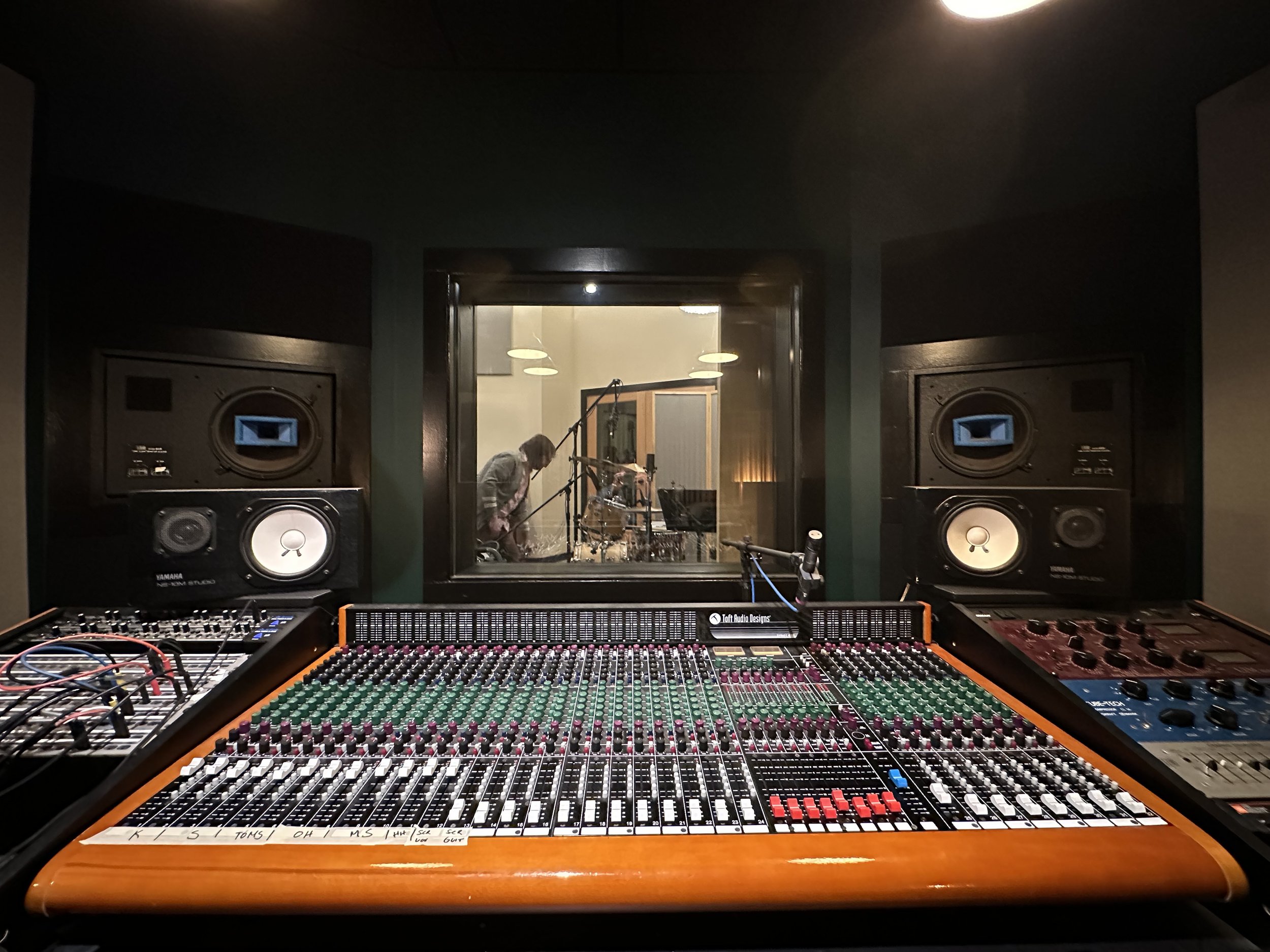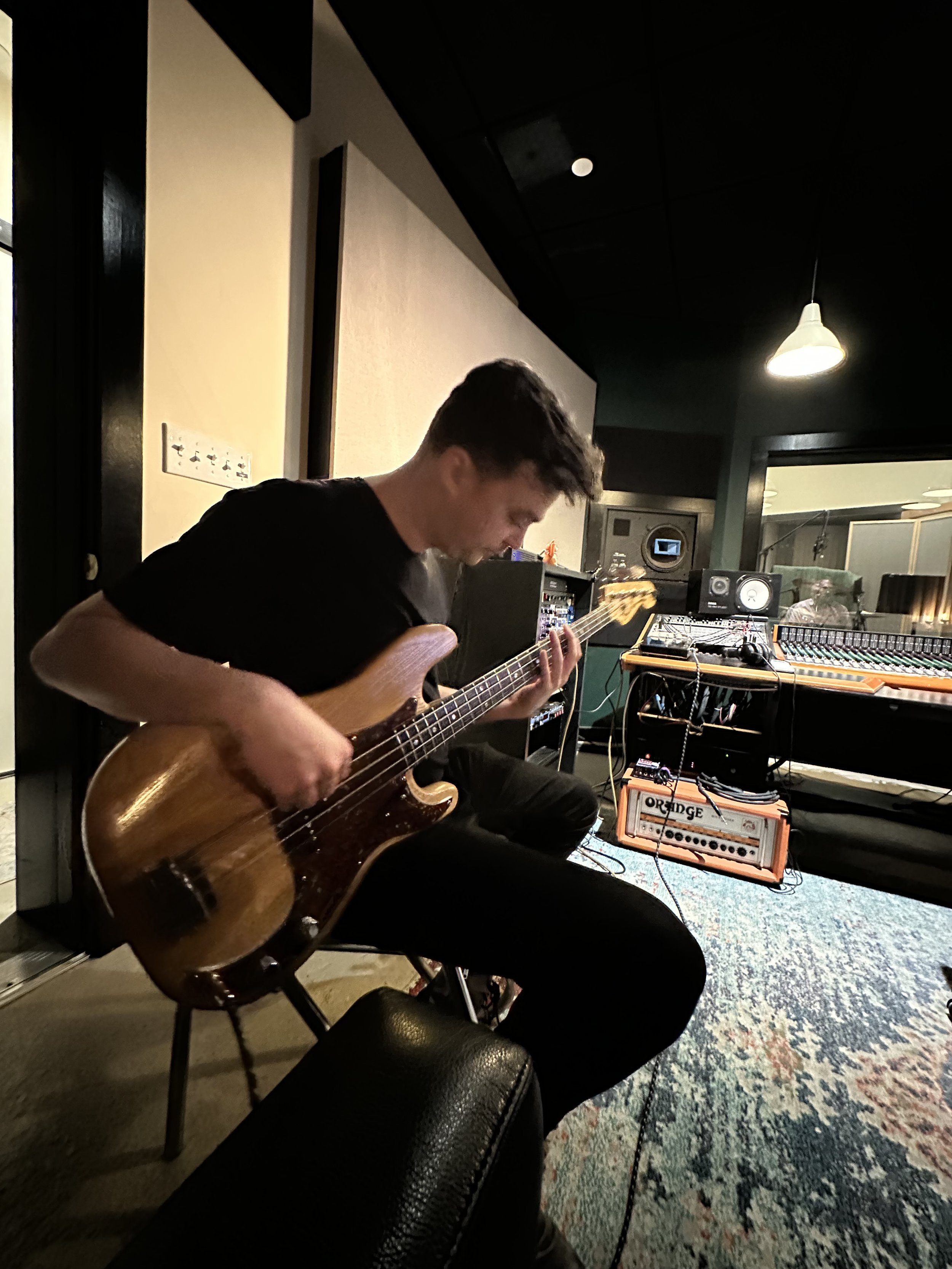Plaid Dog Recording Project: Behind the Scenes
Pre-Production
During remote pre-production sessions I worked with producer and engineer Mike Davidson of Plaid Dog Recording (a recording studio in Waltham, Massachusetts) to map out the songs I had in mind for this project in Logic, a recording software program. For each song we discussed song structure and flow as well as the overall vision for it sonically. Ahead of each pre-production session I shared a demo of the relevant song with Mike so he could listen and get a feel for it and it’s direction. (A demo usually included an acoustic guitar, vocal, drum, and bass track.)
Along with each demo I sent Mike the stems (individual audio files) that made up the demo. Ahead of each session, Mike imported the acoustic guitar and vocal scratch (not final) tracks that I provided to him into Logic. During a session we worked together to replicate, refine, and develop the drum part from the demo to help define the overall groove and flow of the song. We’d then discuss our vision for what other instruments other than drums, bass, acoustic guitar and electric guitar might be fitting for the song, to make it the best it can be.
Production
The production process includes tracking all of the instruments and vocals that make up a song.
We always started by tracking drums against the scratch (not final) acoustic guitar and vocal tracks that were provided as part of the demo. After drums we’d track bass and then the acoustic guitar(s). After that, the electric guitars and keys, and lastly, the vocals.
While a recording process may seem like all fun, it’s a pretty slow, repetitive, and meticulous process - but all because everyone involved cares about making the final product the best it can be.
A recording session would last anywhere from 4 - 8 hours depending on the objective.
Post-production
The post-production process includes mixing and mastering. You may ask, what does mixing and mastering mean? The best way for me to explain is to reference an Izotope article that explains it relatively simply and rather well:
“Mixing is the stage after recording where you blend individual tracks together, while mastering is the final stage of audio production where you polish the entire mix to prepare for distribution. Mixing is when an engineer carves and balances the separate tracks in a session to sound good when played together. While mastering a song means putting the finishing touches on a track by enhancing the overall sound, creating consistency across the album, and preparing it for distribution.
To put it another way, here’s an analogy in terms of books: The artist is the author. The mixing engineer is the editor, helping the author frame their project in the best light. The mastering engineer is the copyeditor, minding the Ps and Qs.”
Producer and engineer Mike Davidson handed the mixing process over to Max Challis, who did a wonderful job, interpreting and incorporating all of my extremely particular notes and feedback on the mixes. Want to get a feel for the extensiveness of the mixing process? Take a look at the mix notes that went back and forth between Max and me.
The songs are currently being mastered by Mike Davidson. Once mastered, we’ll begin releasing them!











